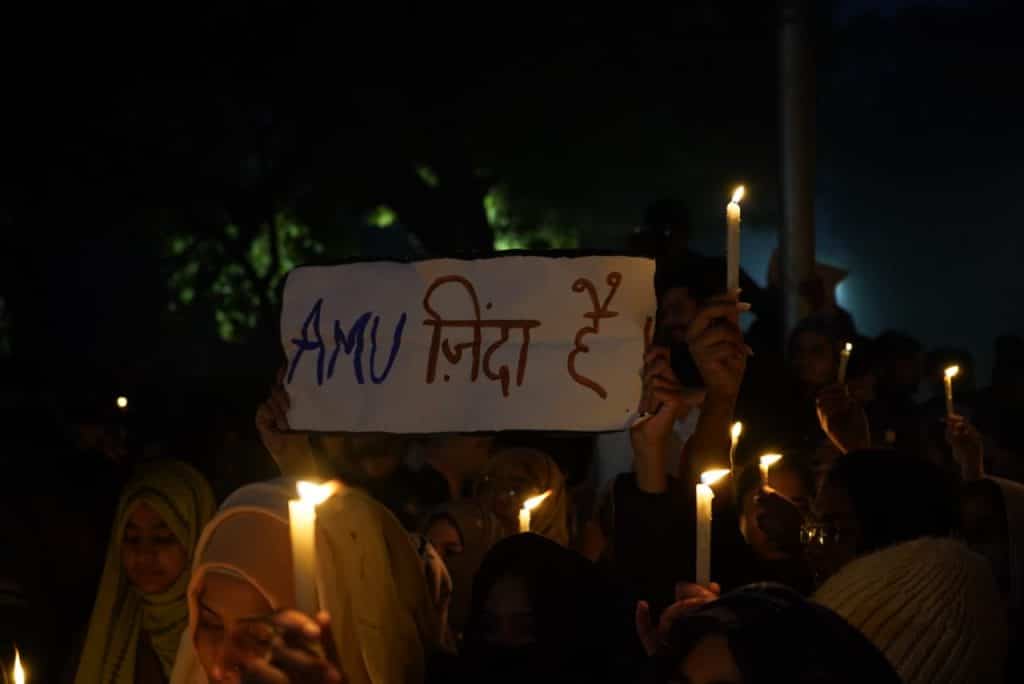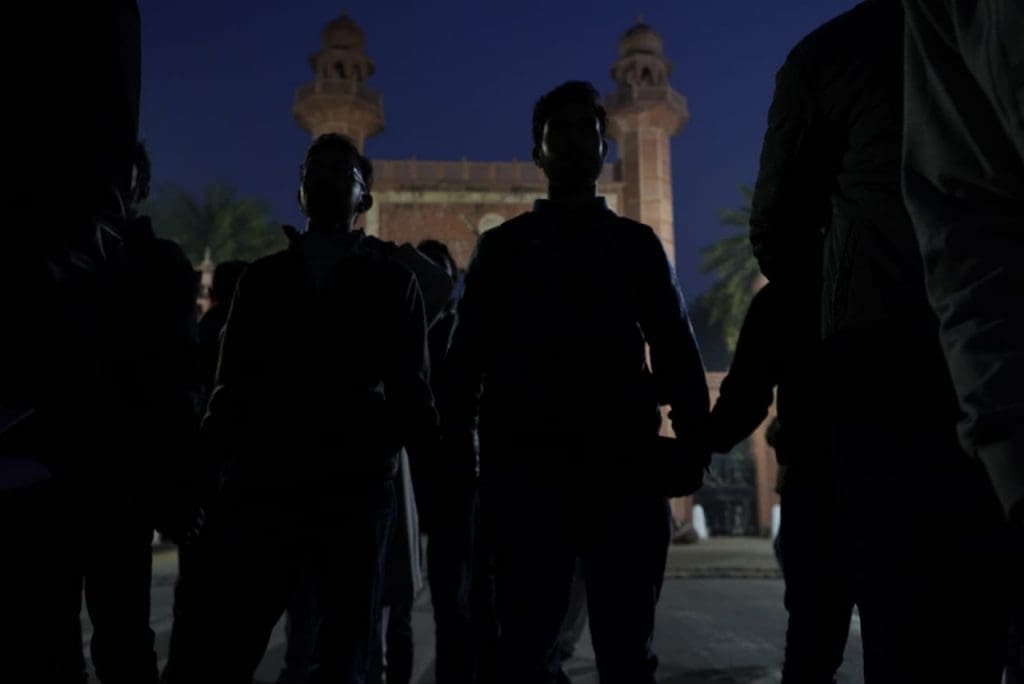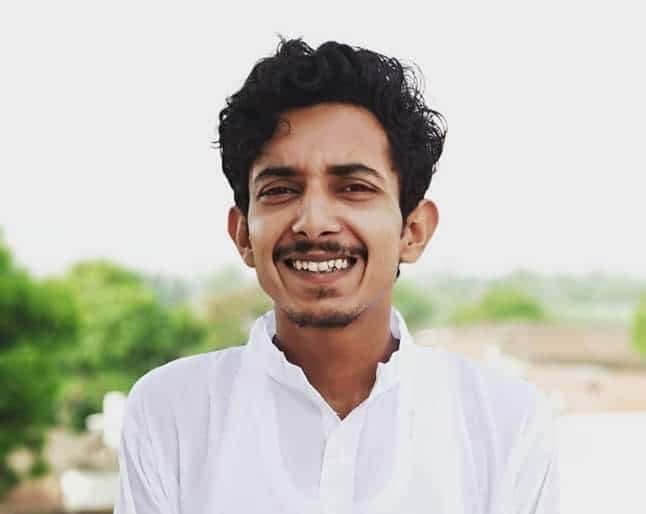
As my rickshaw moves towards the Bab-E-Syed of the Aligarh Muslim University, the rickshaw puller asks me an innocent question, “It is near the entrance of the university, right?”. I humbly tell him this is the entrance to the university, as I look at unlit strings of LED lights and newly painted gates, a reminder of the centenary celebrations that happened a few weeks ago at the university. However, as the presence of lights put up by the authorities was a remembrance of what started a 100 years ago, yellow barricades put up by the Aligarh Police, and countless scars, both physical and mental, on the students of AMU were reminders of what happened exactly a year ago on the campus: a tale of protests, police brutality, and a consequent witch hunt of students.
15 December 2019 was an important date in the history of Aligarh Muslim University. Exactly one year ago from today, the campus witnessed violence of unforeseen proportions. While major news portals and specific channels with connections to the state would lead you to believe that the crackdown was due to a spontaneous reaction to rumours from Jamia Millia Islamia, but that wouldn’t be the truth. As several well documented evidences show, AMU had been a hotbed of political discourse and dissent throughout its long history, and especially in the month of December 2019, with several public discussions, student meetings, and protest gatherings happening over the (then, proposed) Citizen Amendment Bill and the National Register of Citizenship.
“Students were holding discussions, as they usually did, on issues that mattered to them. One such discussion was on the consequences of the Babri Masjid verdict on the 6 December. There were continuous discussions on the CAB and NRC combination throughout the first two weeks of December. What happened next… that is something I would not like to describe it again. It was horrific to say the least”, said Faraz, a student of Engineering.


What did happen on the eve of 15th December is tragic enough to make almost any student tremble to repeat it. After protestors had moved towards the Bab-e-Syed gate to question authorities about the attack on students of Jamia Millia Islamia, they were met with abuses, racial slurs, and then, stones, from a battalion of Uttar Pradesh police that was present in large numbers right outside the University premises. As the situation worsened, so did the attitude of policemen towards university students. The videos that emerged from that night included the Rapid Action Force and CRPF Personnel directly firing stun grenades and rubber pellets at students, blood soaked students being ferried off by bikes to the Jawaharlal Nehru Medical College because ambulances were already occupied transporting those who had lost consciousness and/or sustained heavier physical injuries.
“I was directly opposite the Morrison Court when I heard the RAF and CRPF bursting inside and hauling anyone and everyone that they found. They were beating people senseless, and we heard the sound of a room burning. I was informed by a roommate that the police had thrown tear gas canisters inside a room and burnt it down. I had read about the dread of the midnight knock, that night, as students and hostlers laid wide awake in locked rooms or roofs. That was the first time I witnessed it myself,” Riad Azam said, who was then in the last leg of his PhD in English Literature.
Even as one year of that tragedy has been completed, the victims upon whom this trauma was inflicted remain without closure, justice, or peace. “The worst part of that day was that it was a point of no return. Our campus had always been political, but the torture that students had faced that night was inexplicable. Everything is now another step towards a battle, towards a binary. Any discussion that we might do can be the reason we’re on the next prime time, I don’t see us turning back from this, to find a simple solution. This will be a long drawn affair,” said Mansi Singh, a student of Commerce.
In the immediate days and months after this incident, a lot of steps were announced in order to throw water under the bridge. On 22 December, the AMU administration had announced an enquiry to be conducted by Justice VK Gupta, Former Chief Justice of Uttarakhand High Court to probe the “untoward developments” which had taken place on 15 December. Till date, there has been no development that has been made public either by Justice Gupta or the AMU administration.
On 24 February, 2020, the Allahabad High Court had ordered the DGP of UP Police to take action against the policemen who were seen beating students and abusing their powers. The only action that was taken by the Aligarh Police since then has been against the students. In the aftermath of the protests in Aligarh, more than 54 students have been named in First Information Reports or Tahreers (an unofficial report submitted to a police station). Out of the 26 students who were detained on the night of 15th December, almost all of them still have legal cases pending along with the scars from that night, as they had alleged that they were stripped and beaten in police custody. The student activists that were prominent in sustaining the movement against CAA and NRC were booked under various cases and kept behind bars, with Farhan Zuberi, Amir Minto and Sharjeel Usmani being a part of that list, all of whom were arrested between April to July 2020.


In the same order, the High Court had ordered the Chief Secretary of Govt. of Uttar Pradesh to provide suitable compensation to the six students who have been grievously injured commensurate with their injuries, on humanitarian grounds. Mohammad Tariq, a scholar who had to have his arm amputated after a stun grenade burst in his proximity, says that he has not received any compensation from the state, even though the University has provided some monetary help.
The targeting of AMU and JMI is conspicuous because of their cultural history and population of educated, politically active Muslim youth.
“Aligarh Muslim University was assaulted and attacked the same way that Muslims are attacked by the State. There was a reason that AMU and JMI were tormented far worse than any other educational institute, because they are the seats of Muslim education. And the fact that they could beat us up so easily indicate just how lost the status of Muslim identity and dignity is in India,” concludes Nafis Haider, a student of Political Science.



